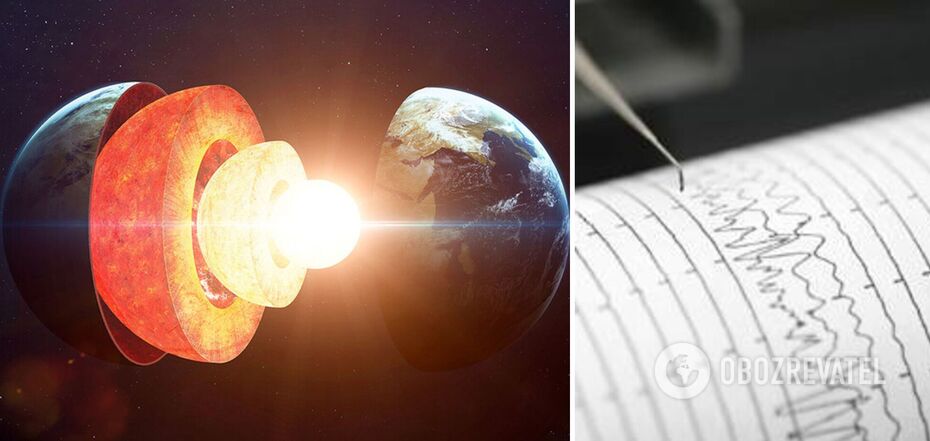Life
The Earth's core stopped and changed the direction of rotation: what scientists have learned
The Earth's inner core has recently stopped and may have changed its direction of rotation. This is evidenced by a new study by scientists who studied data on seismic waves from earthquakes that penetrate the Earth's inner core.
The authors of the study are Yi Yang and Xiaodong Song from Peking University in China. Their work was published in the journal Nature.
In their analysis, they relied on seismic wave data collected from the beginning of 1960 in Alaska to data collected in 2021.
During the study, they found that parts of the Earth's inner core that had previously shown clear signs of variation suddenly showed very little change around 2009, which they say indicates that the internal rotation of the core had stopped.
They also found noticeable changes in the waves starting in the early 1970s, suggesting that this pause was part of an oscillation that occurs approximately every 70 years when the inner core gradually stops and reverses its rotation.
This 70-year period coincides with the frequency of climatic and geological phenomena that affect life on our planet. Previously, the recurrence of these phenomena was a mystery to scientists.
Although the core's rotation affects the environment on the Earth's surface, scientists urge not to panic and not to start talking about a global catastrophe, as it is obvious that periodic changes in the core's rotation are a normal part of its behaviour and do not pose a risk to life on Earth.
In general, the internal structure of the Earth remains a mystery to scientists. The structure of our planet can be divided into four main layers: the outer crust, the predominantly rigid mantle, the liquid metallic outer core, and the inner core, which consists of iron and nickel.
As scientists explain, the inner core is separated from the rest of the solid Earth by a liquid outer core, so it is able to rotate in a different direction than the Earth's surface. The rotation of the inner core is regulated by the magnetic field generated in the liquid metallic outer core, as well as by the gravitational effects of the mantle.
However, theories about the movement of this inner core are not consistent with each other. Many researchers previously believed that the planet's inner geological layer rotates with the rest of the planet slightly faster than the surface, but this is now believed to be not the case.
It should be added that the strange movement of the Earth's core may seem to have no impact on human life, but this is not entirely true. The Earth's core, especially its outer part, affects the planet's magnetic field, which has shifted by 2250 kilometres since the beginning of the 19th century.
And if earlier the shift occurred at a rate of about 15 km per year, since 1990 this rate has increased to 50-60 kilometres per year.
Based on the materials of IFLScience and Vice.
As OBOZREVATEL previously reported, scientists predict the end of human civilisation due to global extinction, which is the largest since the dinosaurs.
Subscribe to OBOZREVATEL's Telegram and Viber channels to keep up with the latest news.




























